Embarking on the journey of starting an organic garden is like stepping into a world where nature’s rhythms guide your hand and heart. For both the wide-eyed beginner and the seasoned green thumb, the allure of growing your own food, free from synthetic chemicals, offers a deeply rewarding experience that nourishes both body and soul. Organic gardening is not merely a trend but a commitment to nurturing our planet and ourselves, a commitment that begins with understanding the fundamentals of soil health, plant selection, and sustainable practices.
As you delve into this guide, you’ll uncover practical insights that demystify the process of setting up your organic oasis, no matter the size of your space. From choosing the right organic seeds and understanding the vital role of compost to mastering crop rotation and companion planting, you’ll find that growing organically is not just possible—it’s profoundly fulfilling. Whether you’re cultivating a small patch in your backyard or transforming a balcony into a verdant retreat, the principles of organic gardening help create a thriving, biodiverse ecosystem.
This article will walk you through each step, offering tips and tricks to ensure your gardening journey is both successful and enjoyable. Embrace the opportunity to connect with the earth in a way that enriches your life and contributes positively to the environment. Your organic garden is more than a source of fresh produce; it’s a testament to the power of sustainable living and a legacy of care for future generations.
Select a Suitable Garden Site
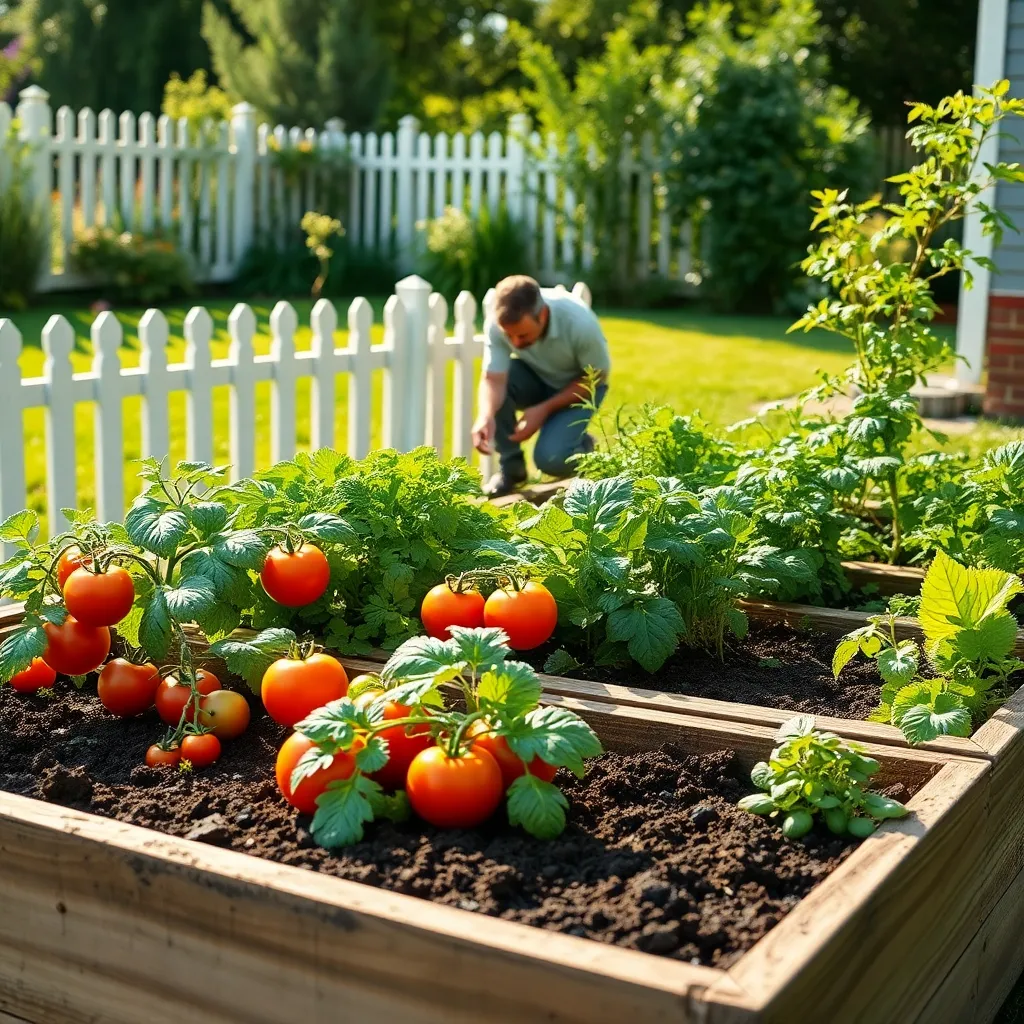
Choosing the right spot for your organic garden is crucial to its success. Begin by identifying an area that receives at least six to eight hours of sunlight daily, as most vegetables and flowers thrive in full sun.
Consider the soil quality of your potential garden site, as healthy soil is the foundation of a productive garden. Conduct a simple soil test to check for pH levels and nutrient content, aiming for a pH between 6.0 and 7.5 for most plants.
Ensure that your garden site has good drainage to prevent waterlogging, which can harm plant roots. If the area tends to collect water, consider building raised beds to enhance drainage and control soil quality.
Accessibility is another essential factor in site selection, as you’ll want your garden to be convenient for regular maintenance. Choose a location that’s easy to reach with a water source nearby, making it simpler to water plants and care for your garden efficiently.
Test and Amend Soil Quality
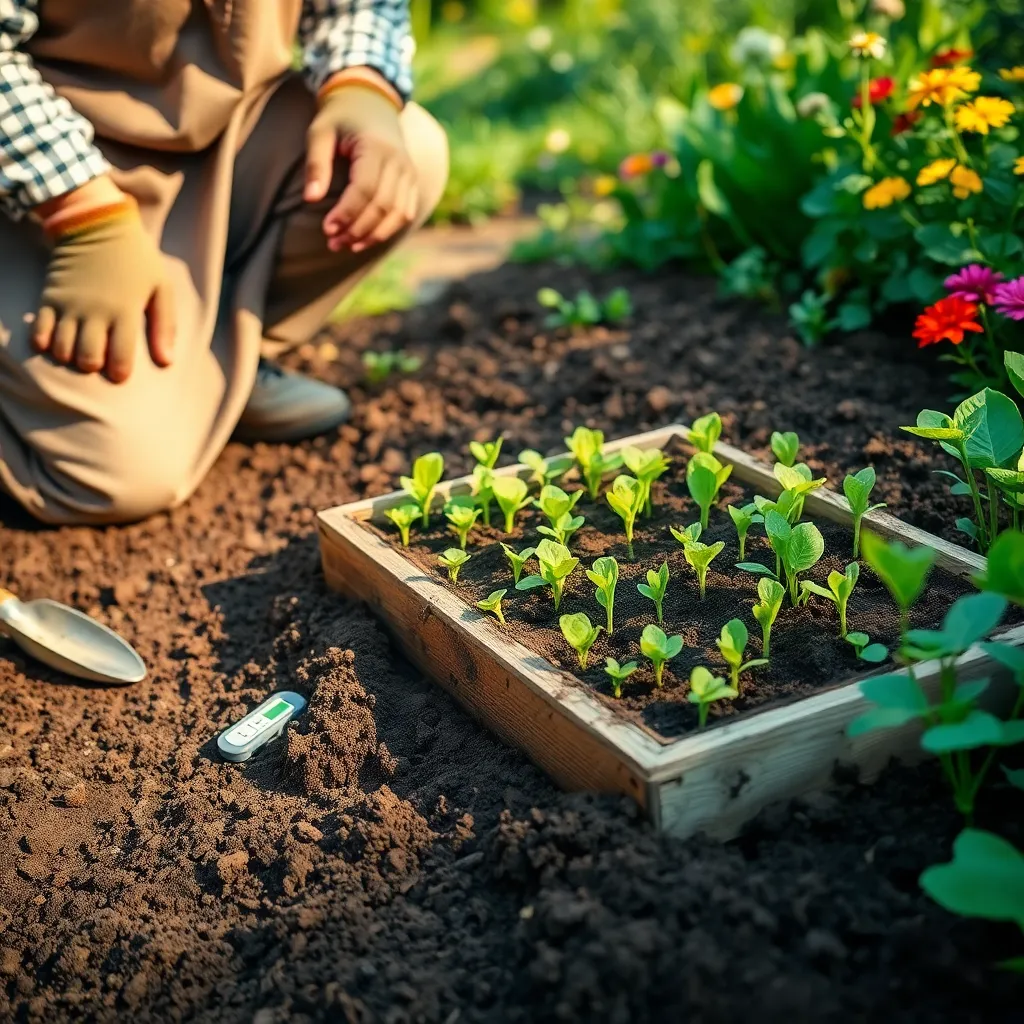
Before planting, it’s crucial to test your soil to understand its composition and nutrient levels. You can purchase a simple soil test kit from a garden center or send a sample to a local extension service for more detailed results.
Understanding your soil’s pH level is fundamental as it affects nutrient availability to plants. Most vegetables thrive in a slightly acidic to neutral pH range of 6.0 to 7.0, so aim to adjust your soil accordingly.
Once you know your soil’s needs, amending it with organic matter can greatly improve its quality. Add well-rotted compost or aged manure to enhance both nutrient content and soil structure.
For clay soils, incorporate sand and organic matter to improve drainage and aeration. In sandy soils, adding organic matter helps retain moisture and nutrients, creating a more suitable environment for plant growth.
Regularly aerating your soil can prevent compaction and ensure roots have access to the air and water they need. Use a garden fork or mechanical aerator at the beginning of each season to keep your soil in top condition.
Choose Organic Seeds and Plants
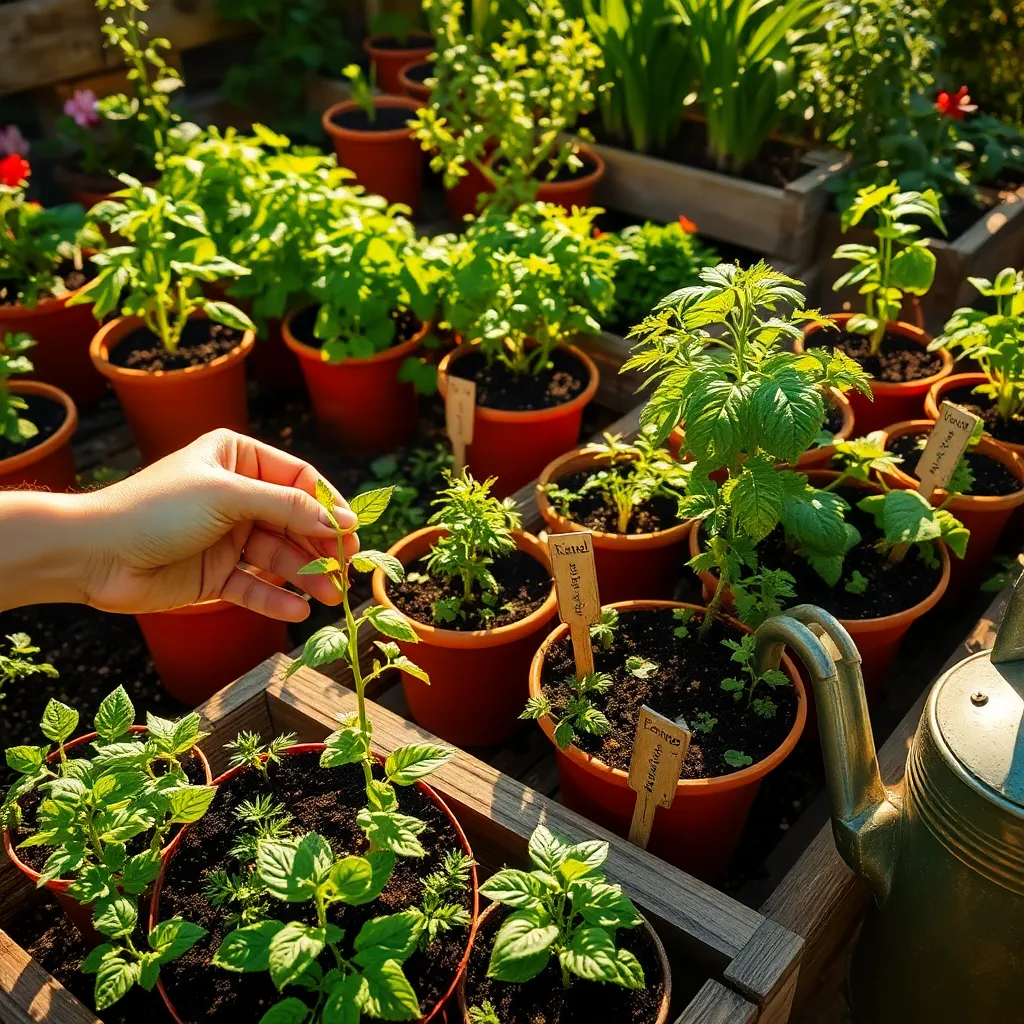
Choosing organic seeds and plants is a critical step in starting your organic garden. Organic seeds are produced without synthetic fertilizers or pesticides, ensuring a natural start for your plants.
Begin by sourcing seeds from reputable suppliers who specialize in organic products. Look for labels such as “Certified Organic” to ensure the seeds meet stringent organic standards.
When selecting plants, consider your garden’s climate and sunlight conditions to ensure healthy growth. Opt for disease-resistant varieties to reduce the likelihood of pest issues and the need for chemical interventions.
To maximize success, plan your garden layout to accommodate companion planting, which can naturally deter pests and enhance growth. For example, planting marigolds alongside tomatoes can help repel harmful insects.
Implement Natural Pest Control
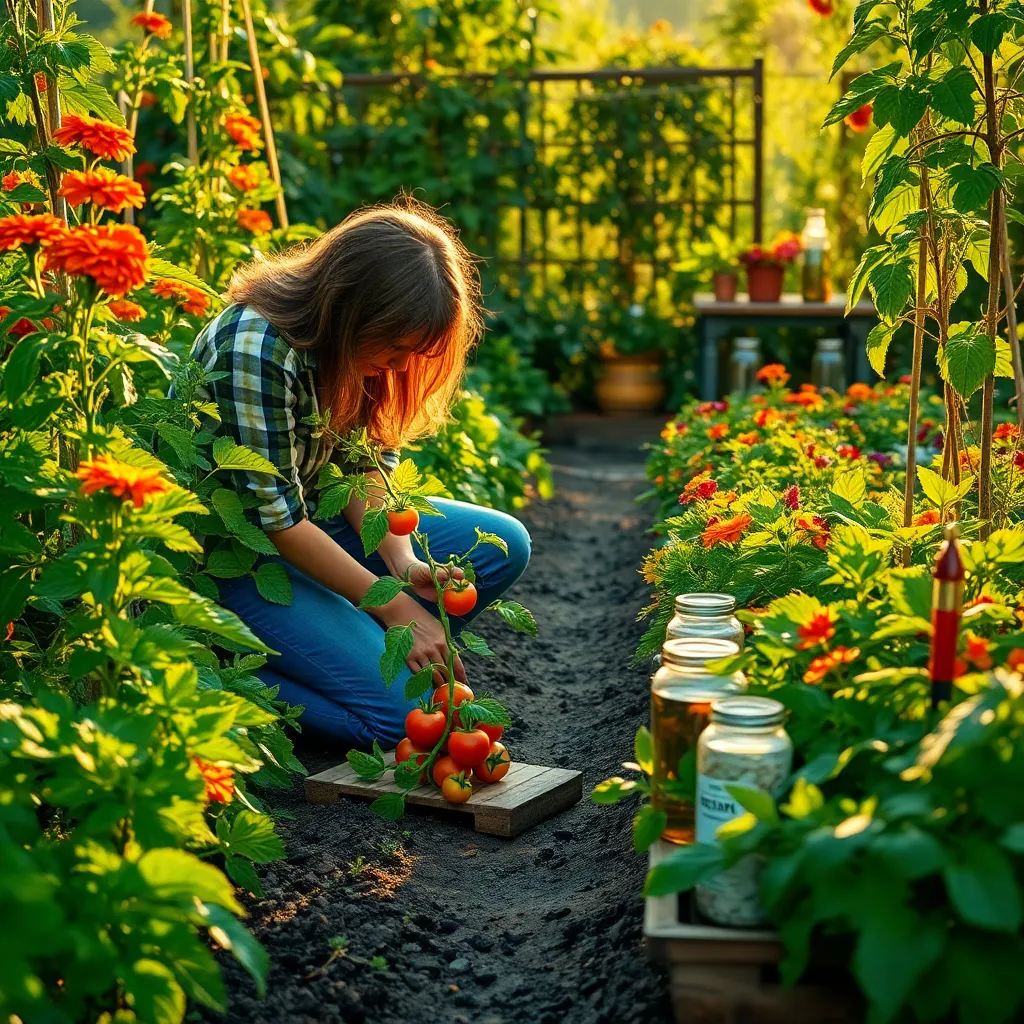
Implementing natural pest control is an essential step in maintaining a healthy organic garden. Start by encouraging beneficial insects like ladybugs and lacewings, which naturally prey on common garden pests such as aphids and mites.
Consider planting companion plants that repel pests; marigolds, for example, deter nematodes and attract beneficial insects. Integrating herbs like basil or rosemary can also help keep away unwanted visitors due to their strong scents.
Maintain good garden hygiene by regularly removing debris and dead plants, which can harbor pests. Ensure your plants are well-spaced to promote air circulation, reducing the likelihood of fungal diseases that attract pest infestations.
For a more advanced approach, introduce trap crops, which are plants that attract pests away from your main crops. For instance, plant nasturtiums near beans; they attract aphids, protecting your valuable bean plants.
Establish a Regular Watering Routine
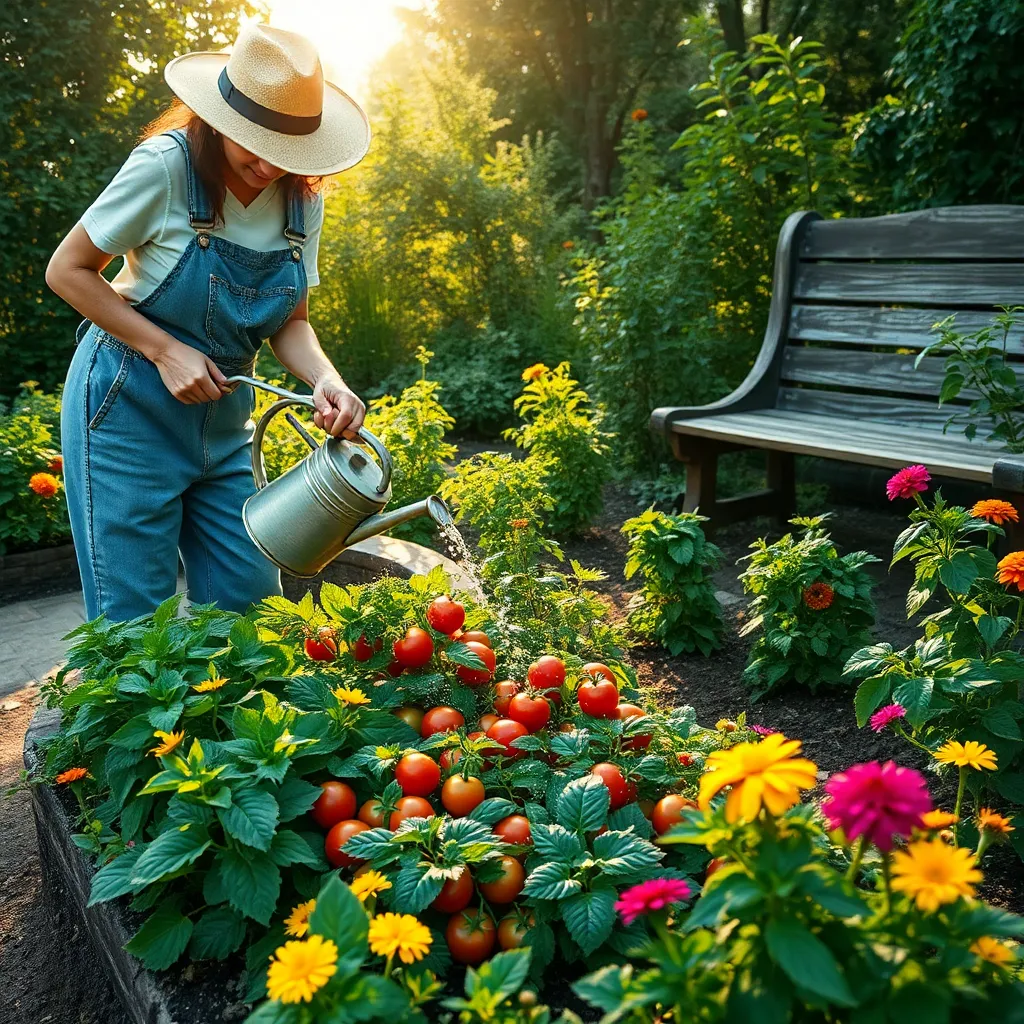
Establishing a regular watering routine is essential for the success of your organic garden. Consistent watering helps plants develop strong root systems, which are crucial for nutrient uptake and overall plant health.
Begin by understanding the specific water needs of the plants in your garden. While most vegetables and herbs thrive with about one inch of water per week, some plants, like tomatoes, may require more frequent watering during hot, dry periods.
Monitor soil moisture by sticking your finger about two inches into the soil to check for dryness. If it feels dry at that depth, it’s time to water, ensuring you water deeply to encourage roots to grow downward.
For advanced gardeners, consider using a drip irrigation system or soaker hoses to deliver water directly to the roots. These methods not only conserve water but also minimize the risk of fungal diseases by keeping foliage dry.
Timing is also important; water your plants early in the morning when temperatures are cooler. This reduces water evaporation and ensures plants have sufficient moisture to withstand the heat of the day.
Incorporate mulching to help retain soil moisture and suppress weeds, which compete for water. Organic mulches like straw or shredded leaves are excellent choices, as they decompose and enrich the soil over time.
Conclusion: Growing Success with These Plants
As we wrap up our exploration of starting an organic garden, we’ve discovered five key relationship concepts that extend beyond the soil and into our personal lives. First, we learned about the importance of nurturing connections, just like we nurture seedlings, by providing consistent care and attention. Second, we explored the power of communication, akin to understanding the language of the plants, ensuring all needs are met through attentive listening and observation. Third, we emphasized patience, recognizing that both gardens and relationships flourish over time with dedication. Fourth, adaptability taught us to embrace change and weather any storm together. Lastly, commitment reminded us that ongoing effort is crucial for thriving partnerships.
Now, take a moment to reflect on which of these principles resonate most with your current relationships and make a conscious effort to incorporate them today. Whether it’s a heartfelt conversation or a small act of kindness, your action can sow seeds of harmony and growth.
Remember, relationships, like gardens, require ongoing effort and care. Bookmark this article as a handy guide to revisit these insights whenever you need a boost of inspiration. As you nurture these connections, envision a future where your relationships blossom with resilience and joy, rooted in love and understanding. Your journey to relationship success begins now!
